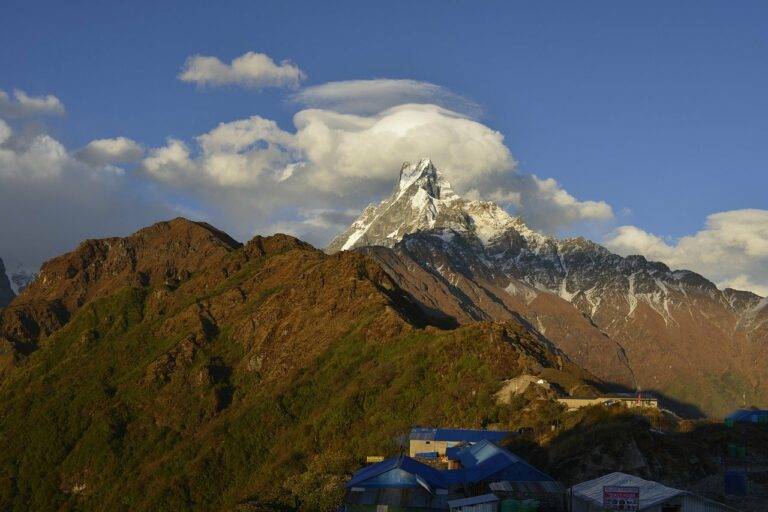Traveling Responsibly in Coastal Areas: Protecting Marine Ecosystems and Beaches
Coastal areas play a vital role in supporting diverse ecosystems and providing numerous benefits to both humans and wildlife. These regions serve as breeding grounds for various marine species, contribute to global biodiversity, and offer essential resources for livelihoods such as fishing and tourism. Additionally, coastal areas act as natural buffers against the impacts of natural disasters like storms, floods, and erosion, helping to safeguard coastal communities and infrastructure.
Furthermore, coastal areas attract millions of tourists annually, generating economic opportunities and cultural exchange. The unique landscapes, rich biodiversity, and recreational activities offered by these regions make them popular destinations for travelers seeking relaxation and adventure. As such, it is crucial to recognize the significance of preserving and sustainably managing coastal areas to ensure their long-term ecological integrity and economic viability.
Impact of Tourism on Marine Ecosystems
The rapid growth of tourism in coastal areas has brought both economic benefits and environmental challenges. One of the significant impacts of tourism on marine ecosystems is the damage caused by activities such as snorkeling, diving, and boat tours. These activities can disrupt fragile habitats, degrade water quality, and disturb marine species, ultimately leading to long-lasting harm to the ecosystem.
Furthermore, the increase in coastal development to cater to tourists has led to habitat destruction, pollution, and habitat fragmentation. Coastal resorts, hotels, and infrastructure development often encroach on important nesting sites for marine species, disrupt natural coastal processes, and introduce pollutants into the marine environment. The cumulative effects of these activities can jeopardize the health and sustainability of marine ecosystems, affecting not only the environment but also the livelihoods of coastal communities dependent on them.
Threats to Beaches and Wildlife
Coastal areas around the world are facing increasing threats to their beaches and wildlife. Human activities such as pollution, development, and climate change are putting immense pressure on these fragile ecosystems. Excessive littering, improper waste disposal, and coastal construction without proper regulations are deteriorating the natural habitats of various marine species.
Furthermore, the rise in tourism has also significantly impacted beaches and wildlife. Tourists often leave behind litter, disturb nesting sites, and engage in harmful activities such as feeding wildlife. These disturbances disrupt the natural behavior of animals and contribute to the degradation of coastal environments. As tourist numbers continue to grow, it is essential to implement sustainable practices to minimize the negative effects on beaches and wildlife.
• Coastal areas facing threats from pollution, development, and climate change
• Excessive littering and improper waste disposal deteriorating natural habitats
• Coastal construction without proper regulations impacting marine species
• Rise in tourism leading to increased pressure on beaches and wildlife
• Tourists leaving behind litter and disturbing nesting sites
• Harmful activities such as feeding wildlife disrupting natural behavior of animals
As the challenges facing coastal areas continue to grow, it is crucial for individuals, communities, governments, and organizations to work together to protect these valuable ecosystems. Implementing effective waste management strategies, enforcing strict regulations on coastal development, promoting responsible tourism practices, and raising awareness about the importance of preserving beaches and wildlife are key steps towards ensuring the long-term health of our coastal environments. By taking action now, we can help mitigate the threats facing beaches and wildlife around the world.
What are some common threats to beaches and wildlife?
Some common threats to beaches and wildlife include pollution, habitat destruction, climate change, overfishing, and invasive species.
How does pollution impact beaches and wildlife?
Pollution, such as plastic debris and oil spills, can harm marine life, disrupt ecosystems, and degrade the beauty of beaches.
How does habitat destruction affect coastal areas?
Habitat destruction, often caused by development and construction, can disrupt nesting sites for wildlife, destroy crucial ecosystems, and lead to loss of biodiversity.
What role does climate change play in threatening beaches and wildlife?
Climate change can lead to rising sea levels, increased temperatures, and extreme weather events, all of which can have negative impacts on coastal areas and the species that rely on them.
How does overfishing impact marine ecosystems?
Overfishing can deplete fish populations, disrupt food chains, and lead to ecological imbalances that can harm both the marine environment and the communities that depend on it.
What can be done to protect beaches and wildlife from these threats?
Conservation efforts, sustainable practices, and education about the importance of coastal areas can all help protect beaches and wildlife from threats such as pollution, habitat destruction, and overfishing.





